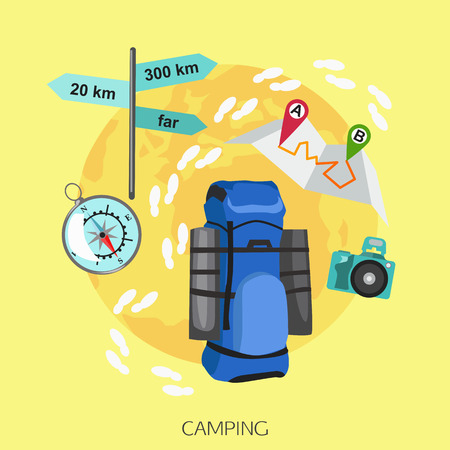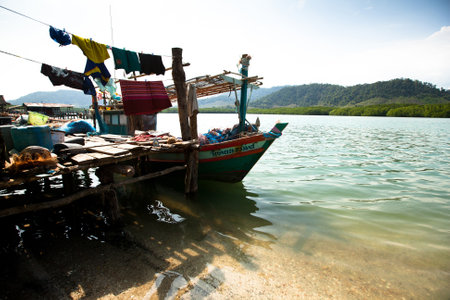Introduction to Reaching the Hebrides
The Hebrides, a remarkable archipelago off Scotland’s rugged west coast, offer campers a truly distinctive experience thanks to their breathtaking landscapes and remote charm. Stretching from the Inner Hebrides, such as Skye and Mull, to the windswept Outer Hebrides, including Lewis and Harris, this region is defined by its wild coastlines, tranquil beaches, and rich Gaelic heritage. However, the very qualities that make the Hebrides so alluring—its island geography and isolation—also pose unique challenges for travellers. Unlike mainland camping adventures, reaching these islands involves careful planning of ferry crossings and transport logistics. For anyone dreaming of pitching a tent on a Hebridean shore or exploring the wilds by campervan, understanding the intricacies of ferry timetables and booking procedures is essential. Efficient transport planning not only ensures a smoother journey but also allows you to maximise your time enjoying the natural beauty that awaits beyond the water’s edge.
2. Booking Your Ferry: Essential Tips
Securing your ferry tickets to the Hebrides is an important step in planning your campsite adventure, particularly during the busy summer months and school holidays. Here’s a breakdown of how to navigate ticket bookings, with practical advice tailored for UK travellers.
Understanding Peak Times
The Hebridean ferries, especially those operated by CalMac (Caledonian MacBrayne), can get fully booked in advance—most notably between May and September, as well as around bank holidays. It’s wise to check school term dates for Scotland and England, as these influence peak periods.
| Month | Peak Times |
|---|---|
| May – September | High demand; early booking essential |
| Easter Holidays | Moderate to high demand |
| Bank Holidays | High demand; limited flexibility |
| Off-Season (Oct – Apr) | More availability; weather disruptions possible |
Booking Portals and Options
The primary portal for ferry bookings is the official CalMac website (calmac.co.uk). You’ll find timetables, fare calculators, and route information there. While walk-on tickets may be available outside peak times, vehicle spaces are limited and should always be reserved ahead. Some local travel agents or tourist offices can assist with bookings, but online is most reliable.
| Booking Method | Details |
|---|---|
| Online via CalMac | Most convenient; instant confirmation; manage bookings easily |
| Phone Booking | Useful for complex itineraries or accessibility needs (+44 800 066 5000) |
| Travel Agents/Tourist Info Centres | Limited options; useful for last-minute help on-island |
Navigating Changes and Cancellations
The West Coast weather is famously changeable, so it pays to be flexible. CalMac allows amendments and cancellations online or via phone—just have your booking reference handy. For full refunds, cancellations must usually be made at least 24 hours before departure. If your sailing is cancelled due to weather or operational issues, you’re entitled to a free transfer or refund; staff at the terminal are helpful in such cases.
Top Tips for Smooth Bookings:
- Book early if travelling during peak season or with a vehicle.
- Add passenger details accurately—names must match photo ID.
- Check ferry status on the day via the CalMac service status page or Twitter updates.
- If plans change, amend your booking promptly to avoid fees.
- If you miss your ferry due to unavoidable delays, speak directly with staff—they’re often accommodating within reason.
With these tips in mind, you’ll have peace of mind when setting off towards the wild beauty of the Hebrides and its welcoming campsites.

3. Choosing Your Route: Mainland Departure Points
When planning your journey to the Hebrides campsites, selecting the right mainland ferry terminal is a crucial first step. The west coast of Scotland boasts several key departure points, each serving different islands and offering distinct travel experiences. Understanding which port best matches your intended destination will not only save you time but also ensure a smoother crossing.
Oban: The Gateway to the Inner Hebrides
Oban is often referred to as the ‘Gateway to the Isles’ and is the busiest ferry hub for those heading to the Inner Hebrides. From here, you can catch regular CalMac ferries to popular islands such as Mull, Coll, Tiree, Barra, and Lismore. For campers targeting sites on Mull or Tiree, Oban is usually the most convenient option. The town itself is well equipped with amenities, making it an ideal place to stock up on supplies before you set sail.
Ullapool: Accessing the Northern Isles
If your campsite adventure takes you further north, Ullapool serves as the primary departure point for Stornoway on the Isle of Lewis in the Outer Hebrides. This scenic port offers a direct and reliable service across The Minch, suitable for both foot passengers and vehicles. If you’re venturing to Lewis or Harris, booking from Ullapool is highly recommended—especially during peak season when ferries can fill up quickly.
Mallaig: Reaching Skye and Beyond
Mallaig provides a picturesque route to the Isle of Skye via Armadale, and occasional services onwards to smaller islands like Rum, Eigg, and Canna. For campers aiming for Skye’s renowned sites or looking for a more flexible crossing without using the road bridge at Kyle of Lochalsh, Mallaig is an excellent choice. Its compact harbour also means a shorter check-in time compared to larger ports.
Recommendations by Destination
Mull/Tiree/Coll: Depart from Oban for the most frequent sailings and straightforward access.
Lewis/Harris: Use Ullapool for direct crossings and reliable vehicle space.
Skye: Choose between Mallaig (ferry) or Kyle of Lochalsh (bridge), but for a classic island arrival experience, Mallaig is preferred.
Smaller Isles (Rum/Eigg/Canna): Check seasonal timetables from Mallaig for limited but scenic routes.
Local Advice
Wherever you depart from, it’s wise to book your ferry tickets well in advance—especially if travelling with a car or campervan. Each terminal has its own character; take time to enjoy local seafood in Oban or a wander along Ullapool’s waterfront before boarding. By choosing your route thoughtfully, you’ll start your Hebridean camping adventure in true Scottish style.
4. Travelling with Vehicles and Equipment
When planning a journey to the Hebrides campsites, many outdoor enthusiasts opt to bring their own cars, campervans, or camping gear. This section provides key information about transporting vehicles and equipment across the ferries, focusing on the policies of major operators like CalMac, as well as practical considerations for a hassle-free crossing.
Ferry Vehicle Transport Policies
The primary ferry operator serving the Hebrides is Caledonian MacBrayne (CalMac). They accommodate various vehicle types, from standard cars to larger campervans and motorhomes. Its essential to book your vehicle space in advance, especially during peak holiday periods, as spaces are limited and crossings can fill up quickly.
| Vehicle Type | Advance Booking Required? | Typical Fees (One Way) | Height/Length Restrictions |
|---|---|---|---|
| Car | Highly recommended | £20 – £40 | Up to 5m length; height varies by vessel |
| Campervan/Motorhome | Essential | £40 – £80+ | Length & height restrictions apply; check specifics per route |
| Bicycle | Advised in summer | Often free or nominal fee | N/A |
| Trailer/Caravan | Essential | £30 – £70+ | Combined vehicle+trailer length restrictions apply |
Cargo & Camping Gear Considerations
If you’re carrying substantial camping equipment, it’s worth noting that foot passengers are allowed hand luggage only. Larger items, such as tents and cooking gear, should be packed efficiently in your vehicle. If travelling as a cyclist or pedestrian with heavy kit, contact the ferry operator beforehand to check arrangements for excess baggage or large outdoor gear.
Packing Tips for Outdoor Enthusiasts:
- Secure all loose items: Ensure your camping gear is stowed safely inside your vehicle to prevent damage during transit.
- Avoid roof racks where possible: High winds on open decks can make roof-mounted items vulnerable; check height limits before boarding.
- Luggage trolleys: Available at some ports but not all—plan accordingly if you need to move heavy bags on foot.
- Cyclists: Use panniers or bike trailers that are easy to manage when embarking/disembarking.
Additional Ferry Guidelines and Local Etiquette
Please arrive at least 30 minutes before departure for vehicle check-in. During busy periods, queues are common; patience and consideration towards fellow travellers go a long way. The crew may direct you closely alongside other vehicles—fold in mirrors and follow instructions for safe parking. Remember that Hebridean communities value responsible travel: minimise disruption by keeping noise low and leaving no trace at embarkation points.
5. Public Transport Options and Island Hopping
If you’re planning your Hebridean camping adventure without a car, there are plenty of public transport solutions to help you traverse the islands with ease. Scotland’s integrated travel networks make it entirely possible to experience the wild beauty of the Hebrides using buses, trains, and connecting ferry services.
Buses: Reliable Routes Across Mainland and Islands
Scottish Citylink and local bus operators provide regular coach connections from Glasgow, Inverness, and other major cities to key ferry ports such as Oban, Ullapool, and Mallaig. Once on the islands, local bus services (like those run by West Coast Motors or Hebridean Transport) link main villages, ferry terminals, and even some popular campsites. It’s wise to check timetables in advance, as some rural routes may run less frequently, particularly on Sundays or public holidays.
Trains: Scenic Rail Journeys to the Sea
The West Highland Line is renowned for its breathtaking scenery and connects Glasgow directly to Oban and Mallaig – both important ferry departure points for the Inner and Outer Hebrides. ScotRail offers through tickets that combine rail and ferry travel under the “Rail & Sail” scheme, providing a seamless transition between train and boat.
Connecting Services: Linking Ferries with Local Transport
Upon arriving at island ports, many ferries are met by local buses timed to coincide with arrivals and departures. However, it’s always prudent to double-check connections when planning your journey – especially if you’re carrying camping gear. Some hostels and campsites may offer their own shuttle services or be within walking distance from major stops.
Tips for Seamless Island-Hopping Adventures
For those keen on exploring more than one island, look into CalMac’s “Hopscotch” ticket options, which allow flexible multi-island travel at good value. When planning island hops, pay close attention to ferry schedules – weather conditions can cause delays or cancellations, so having an adaptable itinerary is essential. Many travellers find it helpful to book ferries in advance during peak season (especially if travelling with bikes). Lastly, pack light if possible; luggage space on buses and ferries is limited, and mobility makes spontaneous adventures much simpler.
Summary: Embrace the Journey
Whether you’re weaving through mountain passes by train or catching a windswept bus across moorlands, public transport opens up rewarding opportunities for sustainable travel in the Hebrides. With a bit of preparation and flexibility, your car-free camping trip can be both convenient and memorable – letting you fully immerse yourself in island life at every stop along the way.
6. Making the Most of Your Ferry Crossing
As your journey to the Hebrides unfolds, the ferry crossing isn’t just a means to an end—it’s an experience in itself, brimming with unique moments and comforts. British travellers often find these crossings a highlight, blending relaxation with anticipation for the adventure ahead. Here are some practical suggestions to help you fully enjoy this part of your trip.
Facilities Onboard: Comforts at Sea
Most ferries serving the Hebrides are well-equipped to ensure a comfortable passage. You’ll typically find spacious lounges, cosy seating areas, and dedicated play zones for families travelling with children. Cafés and canteens offer classic British fare—think hearty bacon rolls, a good cuppa, and perhaps even a scone or two. For those needing a bit of peace, quieter observation lounges provide space to unwind with a book or simply watch the waves roll by. WiFi may be patchy, but that’s all part of switching off and soaking in the journey.
Scenic Highlights: Views Not to Be Missed
The routes to the Hebrides are renowned for their stunning coastal panoramas. As you glide across the water, keep an eye out for rugged headlands, distant mountains, and—if luck is on your side—a pod of dolphins or even a minke whale. Bring binoculars if you have them; they’ll enhance your appreciation of seabirds wheeling overhead and fishing boats bobbing on the horizon. Early morning or late afternoon crossings can be especially atmospheric, with soft Scottish light lending an ethereal quality to the seascape.
Onboard Etiquette: A Few Friendly Reminders
Politeness goes a long way aboard British ferries. Queue patiently at cafés and when boarding or disembarking—it’s expected and appreciated. Keep noise levels moderate in shared spaces so everyone can enjoy the crossing in comfort. If you’re travelling with pets, make sure to follow designated areas and always clean up after them. Smoking is generally restricted to certain outside decks; check signage before lighting up.
Top Tip: Make Connections
Don’t hesitate to strike up a conversation with fellow travellers or crew—many locals use these ferries regularly and are happy to share tips about hidden spots or must-see sights on the islands.
In Summary
Your ferry crossing is more than just transport—it’s an integral chapter in your Hebridean adventure. Take time to savour the facilities, embrace the scenery, observe local etiquette, and connect with others on board. By doing so, you’ll arrive at your campsite refreshed and already steeped in the spirit of island life.


